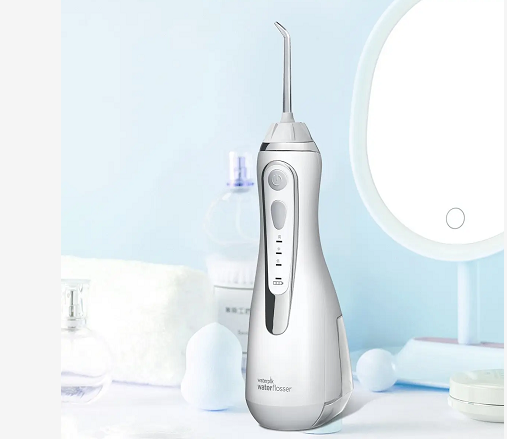The purpose of the toothbrush is to:
1. Inhibit gum bleeding. For people who are prone to bleeding when brushing their teeth, rinse the gingival wound with the high-pressure ultra-fine pulsed water column of the dental irrigator, which will gradually heal the wound. Mild bleeding can disappear after 1-2 days of use.
2. Relieve toothache. Using a dental irrigator to rinse the painful area caused by inflammation can remove harmful substances from the inflamed area. At the same time, the massage effect of the pulsed water column on the gums will promote the blood circulation of the painful area, thereby relieving the pain.
3. Reduce oral odor. The household dental irrigator rinses deeply between the teeth with a high-pressure ultra-fine pulsed water column, timely and effectively removes food residues, soft scales and harmful bacteria in the teeth, completely improves the oral environment, promotes the secretion of high-oxygen saliva and accelerates its flow. Thereby improving bad breath.
4. Save the time and cost of dental treatment. A clean mouth keeps teeth healthy, avoids the pain of queuing, registration, waiting, and traveling to and from the hospital for dental treatment, eliminates the hidden dangers of other diseases caused by oral diseases, and saves huge expenses for tooth restoration.

What is the principle of the toothbrush
1. Principle
1) Make the water flow jet and impact in an appropriate pulse form, or make the water flow bring in more bubbles, which can also have a similar vibration and impact effect;
2) Add some additives with different functions to the water flow, such as adding fine hard and heavy sand particles to form countless high-speed "*", or adding some surfactants to increase the cleaning function, etc. The impact cleaning ability of the water column is also related to the size of the water column.
2. Structure
1) Use the self-contained electric pump to generate water pressure;
2) Use the pressure of tap water directly. Therefore, the tooth irrigator can be mainly divided into two categories according to the structure: electric tooth irrigator and faucet tooth irrigator. The structure of the electric tooth punch mainly includes an electric water pump, a water storage tank, and a nozzle.
The structure of the faucet tooth irrigator mainly includes a connecting device with the faucet and a spray head.
3. Necessity
Gingival sulcus and interdental space are two of the most difficult places to clean, with studies showing that "up to 40% of tooth surfaces cannot be cleaned with a toothbrush". Although flossing (or toothpicks) can remove buildup on the surface of the teeth, microscopically, uneven surfaces can still be unclean. Bacterial growth requires only a very thin layer of nutrient film, and the harmful effects of the remaining dirt film still partially exist. In principle, the pressure water flow, which is powerful enough to destroy the dead and can drill into the hole, is the most ideal oral cleaning method. According to the research of relevant institutions in the United States, the pressure water column can rush into the gingival sulcus to a depth of 50-90%. The pressure water column can not only clean various gaps, holes and convex and concave surfaces, but also achieve microscopic thorough "cleaning" without Just a rough "clear" of the macro. In addition to the function of cleaning the teeth and mouth, the water flow has a massage effect on the gums, promotes the blood circulation of the gums, enhances the resistance of local tissues to diseases, and at the same time eliminates bad breath caused by poor oral hygiene.
Prev:What is the difference between an electric toothbrush and a regular toothbrush?
Next:最后一篇